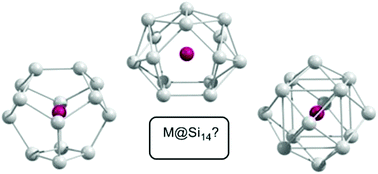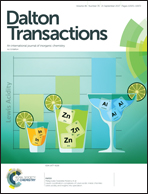The structural landscape in 14-vertex clusters of silicon, M@Si14: when two bonding paradigms collide†
Abstract
The structural chemistry of the title clusters has been the source of controversy in the computational literature because the identity of the most stable structure appears to be pathologically dependent on the chosen theoretical model. The candidate structures include a D3h-symmetric ‘fullerene-like’ isomer with 3-connected vertices (A), an ‘arachno’ architecture (B) and an octahedral isomer with high vertex connectivities typical of ‘closo’ electron-deficient clusters (C). The key to understanding these apparently very different structures is the fact that they make use of the limited electron density available from the endohedral metal in very different ways. Early in the transition series the favoured structure is the one that maximises transfer of electron density from the electropositive metal to the cage whereas for later metals it is the one that minimises repulsions with the increasingly core-like d electrons. The varying role of the d electrons across the transition series leads directly to strong functional dependency, and hence to the controversy in the literature.



 Please wait while we load your content...
Please wait while we load your content...